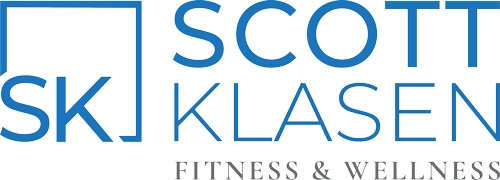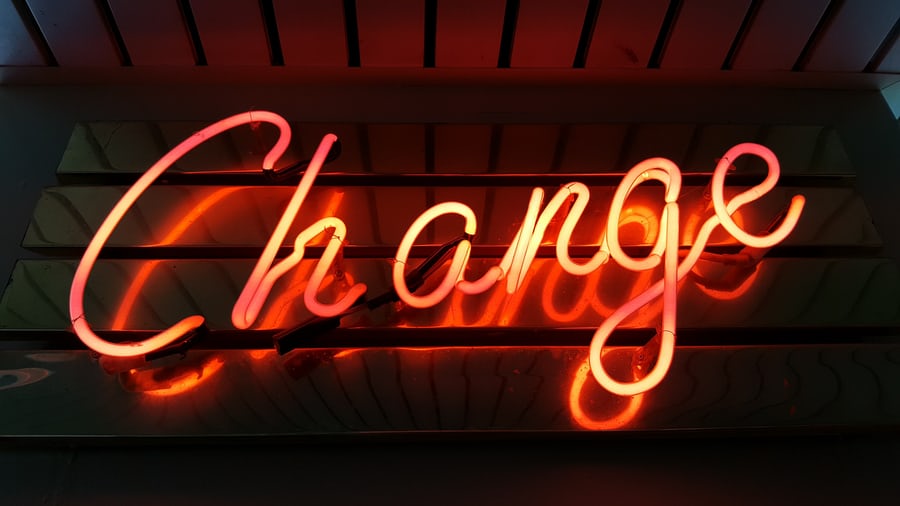Change. In most aspects of my life, I struggle with it. Change is hard. It’s often uncomfortable. It can consume vast amounts of mental and physical energy, and it takes time.
In my professional life, however, I am great at dealing with change, mainly because I have to be. Information pertaining to health and wellness changes on a daily basis and I owe it to myself and the individuals that I work with to keep an open mind to new research and developments as they arise.
I’m very good at not marrying myself to any one single idea, philosophy, or program because I know there’s a good chance that somewhere along down the road I will have to change my way of thinking. All I can do is take comfort in the fact that I’m teaching the best possible information and methods at this particular point in time. When it comes to change, this is where I am at my best.
Unfortunately, the rest of the time I tend to resist change like the old man who refuses to get an email account and still puts a stamp on the letter, takes it to the post office and wonders why nobody ever writes him back. At some point, in order to get what you want, change needs to occur.
Ultimately, I do what I do on a daily basis in order to help bring about change in people. Going from sedentary to active. Changing a poor diet into a healthful one. Pain-ridden to pain-free. You name it, I’m always trying to foster some sort of change.
Every once in a while, I do run into someone who is willing to turn their life upside down and change every negative element all at once that is holding their health hostage and preventing them from reaching their goals. Let me be clear – these people are the exception to the rule. I have to admit, it’s awesome to witness these individuals in action because they tend to make so much progress in so little time. These are the folks you look at six months later and can see, without a doubt, have changed their lives.
As for the rest of us, it appears we would better off taking an alternate path to the “all or nothing” approach to change. In their book Switch – How to Change Things When Change is Hard, Chip and Dan Health reveal that one of the biggest reasons people fail in their attempt to change is because they simply wear themselves out from all the thinking and analyzing they are doing. Paralysis by analysis I suppose you can say. After that, they attempt to change too many things at once, get discouraged and quit.
I see this happen routinely. A new client goes from the couch to exercise, from the drive-thru window to home cooking, and from poor quality sleep to hitting the pillow hours earlier than they are used to. These are three HUGE changes when it comes to living a healthier life. They also require a huge level of commitment, planning, organization and time. Over time, it proves to be too much and the client slowly settles back into old habits. Sound familiar? This doesn’t need to happen.
Chip and Dan Heath further point out that when someone is having trouble with change, it is absolutely essential to “shrink the change.” So instead of tackling exercise, nutrition and better sleep all at once, perhaps you could put your focus on just one thing until it sticks. Then, when you really own it, tackle the next change. Sure, it might be a slower process, but it will allow you to experience success, thus decreasing the likelihood you will abandon the intended change altogether.
What follows is a list of my top 5 changes that you can make today. These are the 5 changes that I have seen make the largest, most immediate impact in the lives of the individuals I’ve worked with on a daily basis. If you’re the type that thrives on major change, then by all means pursue all 5. If not, just pick one and really go after it. Doing even just one of these will help you look and feel better.
One word of caution. There’s nothing terribly exciting or sexy here. In fact, you’ve probably seen all of these before. All I ask is if you feel as though your health could be better, before you blow off the list, ask yourself, have I actually done these things? Sometimes simple IS better.
- Move. This is going to be different for everybody. Maybe it’s working in the yard, a walk, a run, or a strength training circuit. We are all at different levels here. The point is, determine where you’re at and get your butt off the couch and just move! You will feel better.
- Sugar and artificial sweeteners. I can go on and on, but eating sugar will make you fat. It raises your blood sugar, which causes you to feel tired and sluggish. It causes overeating and increases the odds of developing type 2 diabetes, heart disease and cancer. But artificial sweeteners contain 0 calories so they must be better, right? Sorry. Research continues to reveal that their effects are just as bad and, in some cases, even worse. If you don’t feel good, consider reducing or eliminating it.
- Water. Chances are, you could probably use more of it. Every cell, organ, and system in your body needs water. It helps to flush out toxins, aids in digestion, and carries nutrients to cells. A healthy and efficient metabolism requires that your cells be properly hydrated. Aim to drink half your body weight in ounces of water per day.
- Sleep. Would you like to know my number one indicator if what I’m doing with a client is working or about to work? More often than not, if a client is getting a sufficient amount of quality sleep, I know they are headed down the right track. Conversely, even if a client happens to be losing weight at a particular time but reports lousy sleep quality and/or patterns, I know it’s usually short lived. If your body composition and weight is not where you would like it to be and you’re sleeping less than 7-8 hours per night – get more sleep. If you don’t have one already, the first step in this process would be to develop a bedtime ritual or routine and execute it consistently.
- Manage stress. While some level of stress at the appropriate times is a good thing, too much stress built up for too long will likely take its toll. Many of us are living in a chronic state of low-level stress, which much like a lack of quality sleep, can negatively impact your health in every imaginable way. Alternate nostril breathing lowers your cortisol (the primary stress hormone), thus reducing stress. Start by finding a comfortable seat and lengthen your spine. Exhale completely and then use your right thumb to close your right nostril. Inhale through your left nostril and then close the left nostril with your finger. Open the right nostril and exhale. Inhale through the right nostril and then close it with your thumb. Open the left nostril and exhale. This represents one cycle. Keep your breathing slow and smooth. Go through 10-12 cycles of this or set a timer for 3-5 minutes and see how you feel.
Change is not an event, it is a process. There is usually not one single event that will cause you to change, but rather, a series of steps along the way that facilitates the change process. If you’re looking to get to a place or a state in your life in which you’ve never been, change will be a part of the equation. And if and when you begin to struggle, don’t forget to shrink the change.

